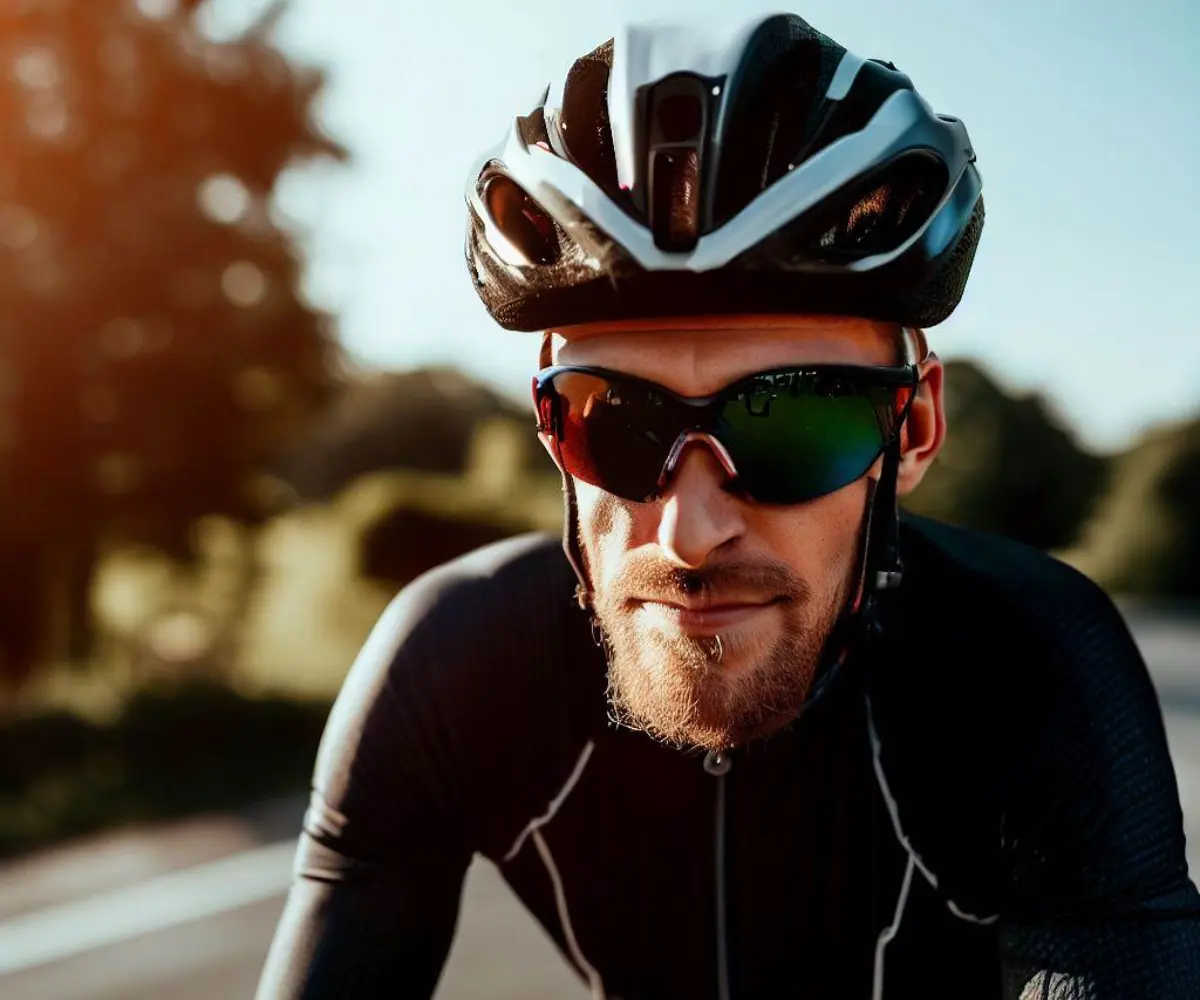Hey fellow cycling friends! I wanna share my top tips for how to wear cycling sunglasses properly. As an avid road and mountain biker, getting your shades dialed in is critical for an awesome, comfortable ride.
So let’s get into it! First up, you gotta find cycling sunglasses that fit your face just right…
Listen up, cycling enthusiasts! Wearing the right pair of cycling sunglasses is crucial for protecting your eyes and improving your riding experience. As someone who has been road biking for many years, I’ve tested my fair share of shades and learned what works.
Here’s the deal – cycling sunglasses aren’t like your average pair from the gas station. They’re specially designed to wrap around your face and block sunlight and debris from all angles. Getting the perfect fit makes a world of difference in comfort and safety.
So where do you start?
How to Wear Cycling Sunglasses
Topics Covered In This Article
- 1 How to Wear Cycling Sunglasses
- 2 FAQs: HOW TO WEAR CYCLING SUNGLASSES
- 2.1 Do cycling sunglasses go over or under the straps?
- 2.2 Where do you put sunglasses when cycling?
- 2.3 Should you wear sunglasses while cycling?
- 2.4 Why are cycling sunglasses so big?
- 2.5 Should sunglasses go over or under bike helmet?
- 2.6 Where do sunglass straps go?
- 2.7 Should cycling sunglasses fit tight or loose?
- 2.8 Can I wear prescription glasses under cycling sunglasses?
- 2.9 Do I really need sunglasses for night riding?
- 2.10 How often should I clean the lenses on my cycling sunglasses?
- 2.11 Do certain lens colors work better for cycling?
- 3 Conclusion: How to Wear Cycling Sunglasses
1. Get the Right Fit
First up, hit your local bike shop and go on a sunglasses shopping spree. Try on every style they’ve got until you find “the one” that wraps around your head without pinching. I like frames that hug my face with the lenses surrounding my eyes. Take your time – these babies are gonna be your new best friend out on the road!
2. Secure with Accessories
Next, you gotta reinforce that bond with some sunglass accessories. Head straps and retention cords amp up stability so your shades stay locked in place over bumps. Just make sure straps aren’t blocking your view – safety first! Properly equipped, your sunglasses will stick to your face like glue.
3. Align Properly on Your Face
Speaking of positioning, make sure your shades sit evenly on your nose and ears when you don them. I like the top of the frames right above my eyebrows to avoid slipping. And the bottom lining up just below your eyes lets you glance down unobstructed. Dial in the right alignment and you can ride easy knowing your sunglasses have your back.
4. Adjust Nose and Ear Grippers
Now for the magic touch – nose and ear grippers. Press these bad boys to mold them to your unique face shape. It takes a little finesse, but custom grippers keep things comfy and stabilize the fit.
Once you’ve got it all dialed in, you can hit the road confident your sunglasses are optimized for prime performance!
FAQs: HOW TO WEAR CYCLING SUNGLASSES
Do cycling sunglasses go over or under the straps?
I always position my sunglasses over the straps. Putting them under can make taking them on and off a pain. Over keeps things streamlined.
Where do you put sunglasses when cycling?
When I need to take off my shades mid-ride, I’ll often slide them arms-first into the neck hole of my jersey for safe keeping and easy access. Just don’t forget them there after your ride!
Should you wear sunglasses while cycling?
Absolutely! Quality cycling sunnies protect your eyes from sun, dirt, wind and those pesky bugs. I never hit the road without my trusty shades.
Why are cycling sunglasses so big?
The oversized curved shape and wide arms on cycling sunglasses create fuller coverage and security while riding. Plus those bigger lenses expand your field of vision.
Should sunglasses go over or under bike helmet?
Another good one! I prefer slipping my sunglasses on after the helmet so the arms go under the helmet straps for a more secure fit.
Where do sunglass straps go?
If your shades have a strap, I recommend positioning it around the back of your head above where the helmet sits. Keeps them locked in without interfering with the helmet.
Should cycling sunglasses fit tight or loose?
I recommend a snug but not squeeze-your-skull tight fit. You want your shades to move with you as one – no bouncing or slipping allowed!
Can I wear prescription glasses under cycling sunglasses?
Absolutely! Just make sure your prescription frames and cycling sunnies play nice together. Trying them on together is the best move so you can test your vision isn’t obstructed.
Do I really need sunglasses for night riding?
For after dark rides, you actually want clear lenses rather than tinted sunglasses. Those will optimally protect your peepers from wind and debris without obscuring visibility.
How often should I clean the lenses on my cycling sunglasses?
I’m religious about cleaning my lenses before every ride with a soft cloth and spray solution. A few seconds of upkeep keeps your vision crystal clear for safety and enjoyment.
Do certain lens colors work better for cycling?
It depends on the conditions! I like interchangeable lenses so I can go dark gray for sunny days or orange for overcast trails and need extra contrast. Ask your local bike shop for recs based on where you typically ride.
Conclusion: How to Wear Cycling Sunglasses
And there you have it, my complete guide for how to wear cycling sunglasses to maximize your riding experience! Taking the time to find that ideal fit, add stability accessories, properly align the frames, and customize the nose/ear grippers pays off big time. You’ll be riding in total comfort and protection mile after mile.
Let me know if you have any other questions about how to wear cycling sunglasses! I’m always down to geek out over cycling gear. Now get out there, equip those shades, and ride on in confidence and style!
Also Read:
3 Ways to Style Sunglasses for Men

Walter Hendricks is a well-known authority in the eyewear industry, specializing in a diverse range of products such as gaming glasses, swimming goggles, sunglasses, eyeglasses, computer glasses, and fashionable daily-wear eyewear.
Hendricks believes in empowering his readers with in-depth information to help them choose the right glasses that blend functionality and fashion, catering to their unique lifestyle requirements.
His comprehensive reviews and informative articles provide clear insights on everything from cutting-edge gaming glasses to the latest trends in eyewear fashion. Through his work, Hendricks has proven his dedication to helping consumers make informed eyewear decisions that support both their visual needs and style preferences.

